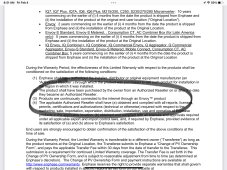New to solar here from North Florida.
This week solar installers are putting in an 18.5kw grid tie array with Enphase IQ7+ microinverters. This should cover 90 percent of our annual electricity usage.
I have 300a service split to two 150a main panels.
For temporary grid down situations I have two portable generators with 30a and 50a receptacles direct to the main panels.
This may sound a bit overkill but I want to have on hand the right Hybrid inverter and appropriate battery bank to utilize solar power in an extended grid down situation where fuel for the generators may be difficult to come by (or I dont want to run the generatros) As this would be a remote possibility, the hybrid inverter and battery bank would rarely be used; thus, in these rare events, I would be fine manually flipping breakers to power critical loads only (thus I shouldn't need to rewire a critical loads panel). This manual selection is what I do already when using the generators for backup.
Ive read a bit about AC coupling and some of the equipment recommended. I have not yet calculated the inverter size I would need, but lets say for discussion's sake I need 8kw with a 20kwh battery bank for critical loads. I have 3 central air units, well pump, pool pump, two fridges and a chest freezer, etc. I wouldnt need to run all three AC units at the same time.
In a grid down situation I understand that if I have tied the inverter into one of the main panels, it should be able to power any critical load I select on either on the panels.
I guess I am asking for your help as to what I need for this ac coupled backup system... And if I am thinking about this the right way. I'd like to set this up myself rather than over pay for Powerwall(s) (as I already overpaid for the solar install!)
I am looking at the Outback 8k hybrid inverter with 48v server rack batteries in parallel with bus bars as some of Will's videos recommend. If 8k isnt large enough I understand you can run another inverter and battery bank side by side. If this is the case I would tie one into each panel I suppose.
So for materials I would need the following:
Inverter
Batteries
Bus bars
Appropriate cabling
Fuse(s)
Breakers
Anything else?
This week solar installers are putting in an 18.5kw grid tie array with Enphase IQ7+ microinverters. This should cover 90 percent of our annual electricity usage.
I have 300a service split to two 150a main panels.
For temporary grid down situations I have two portable generators with 30a and 50a receptacles direct to the main panels.
This may sound a bit overkill but I want to have on hand the right Hybrid inverter and appropriate battery bank to utilize solar power in an extended grid down situation where fuel for the generators may be difficult to come by (or I dont want to run the generatros) As this would be a remote possibility, the hybrid inverter and battery bank would rarely be used; thus, in these rare events, I would be fine manually flipping breakers to power critical loads only (thus I shouldn't need to rewire a critical loads panel). This manual selection is what I do already when using the generators for backup.
Ive read a bit about AC coupling and some of the equipment recommended. I have not yet calculated the inverter size I would need, but lets say for discussion's sake I need 8kw with a 20kwh battery bank for critical loads. I have 3 central air units, well pump, pool pump, two fridges and a chest freezer, etc. I wouldnt need to run all three AC units at the same time.
In a grid down situation I understand that if I have tied the inverter into one of the main panels, it should be able to power any critical load I select on either on the panels.
I guess I am asking for your help as to what I need for this ac coupled backup system... And if I am thinking about this the right way. I'd like to set this up myself rather than over pay for Powerwall(s) (as I already overpaid for the solar install!)
I am looking at the Outback 8k hybrid inverter with 48v server rack batteries in parallel with bus bars as some of Will's videos recommend. If 8k isnt large enough I understand you can run another inverter and battery bank side by side. If this is the case I would tie one into each panel I suppose.
So for materials I would need the following:
Inverter
Batteries
Bus bars
Appropriate cabling
Fuse(s)
Breakers
Anything else?
Last edited:




